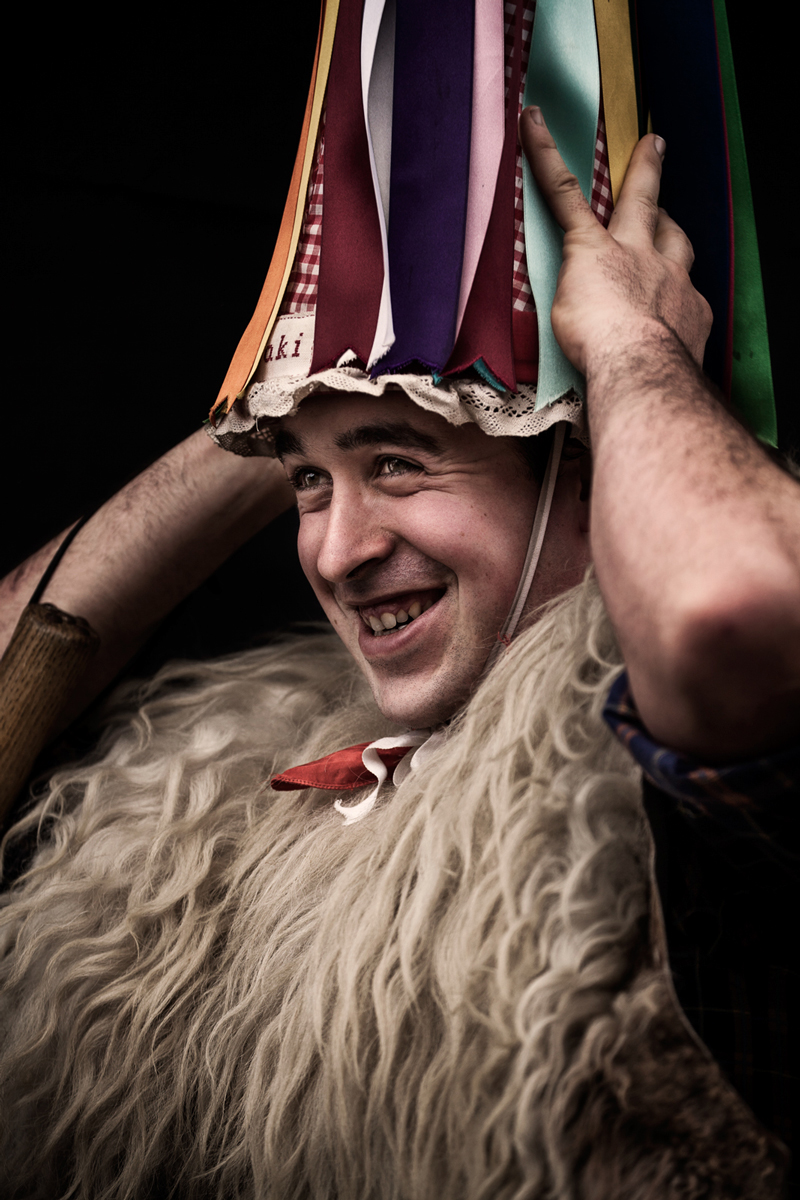
In the shade of Mont Mendaur, through the valley of Spain’s Ezkurra River, there’s a region of woods, hamlets, and small villages where, once a year, the Joaldunak gather to shake their bells, awakening nature from winter and scaring bad spirits away.
It’s a mountainous and leafy land. A land filled with legends and impossible stories where culture and mystery intermingle into traditions of forgotten origins. Nobody knows when or where the Joalduna (“cowbell” in Basque) character emerged, but it is now the central figure of the Carnivals in Ituren and Zubieta—two towns, with around three hundred inhabitants each, that appear to have been stolen from a folk story.
About fifty of those six hundred neighbours become the Joaldunak each year. They don waistcoats made of sheep skin, leather sandals known as abarcas, white skirts, and neck kerchiefs. Most strikingly, they also carry short sceptres adorned with horsehair and wear cone hats (the tunturro) covered in colourful ribbons and feathers—actually the inspiration for the pointed hats worn by the witches of folklore around the world.
This very pagan celebration is rooted in witchcraft, enchanted forests, miraculous fountains (like the nearby San Juan Xar), and even Basajuans—savage lords of the woods who look like Yeti, covered in fur from the top of the head to the sole of the foot.
In the town of Ituren, over one of the corrals housing the sheep whose skin will become the Joaldunak’s waistcoasts, bouquets of holly are hung from the ceiling to protect the livestock. When asked why he’s done this, the shepherd simply answers, “Magic,” before adding, “I’m not sure it’ll work, though, as I couldn’t remember whether it needed to be male or female holly.”
These lands are bound to ranching, agriculture, and (thanks to their proximity to the French border) smuggling. Far from any political centre, their isolation has made these towns a preserve an oneiric Carnival very different from the opulent parties thrown in bigger cities. This surreal version is much more deeply connected to nature and the magical world.














This copy is an excerpt of the complete article "For whom the Joalduna’s bell tolls", which is available for publication under request.
More information: arroyodiego@gmail.com
Written by: Jaime Dezcallar.
Images: Diego Arroyo Méndez.
Translated by: Elysia Brenner.
More information: arroyodiego@gmail.com
Written by: Jaime Dezcallar.
Images: Diego Arroyo Méndez.
Translated by: Elysia Brenner.

